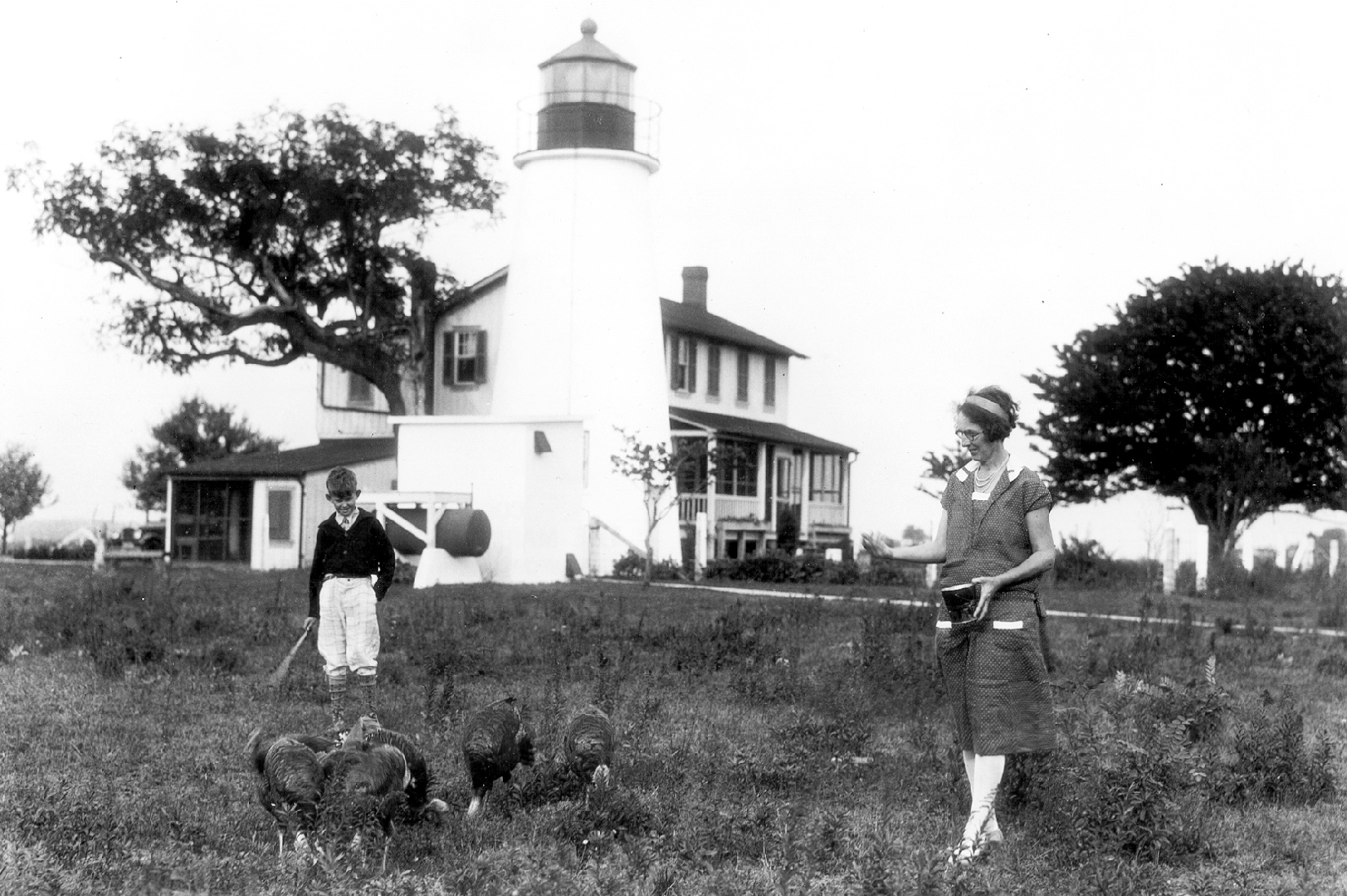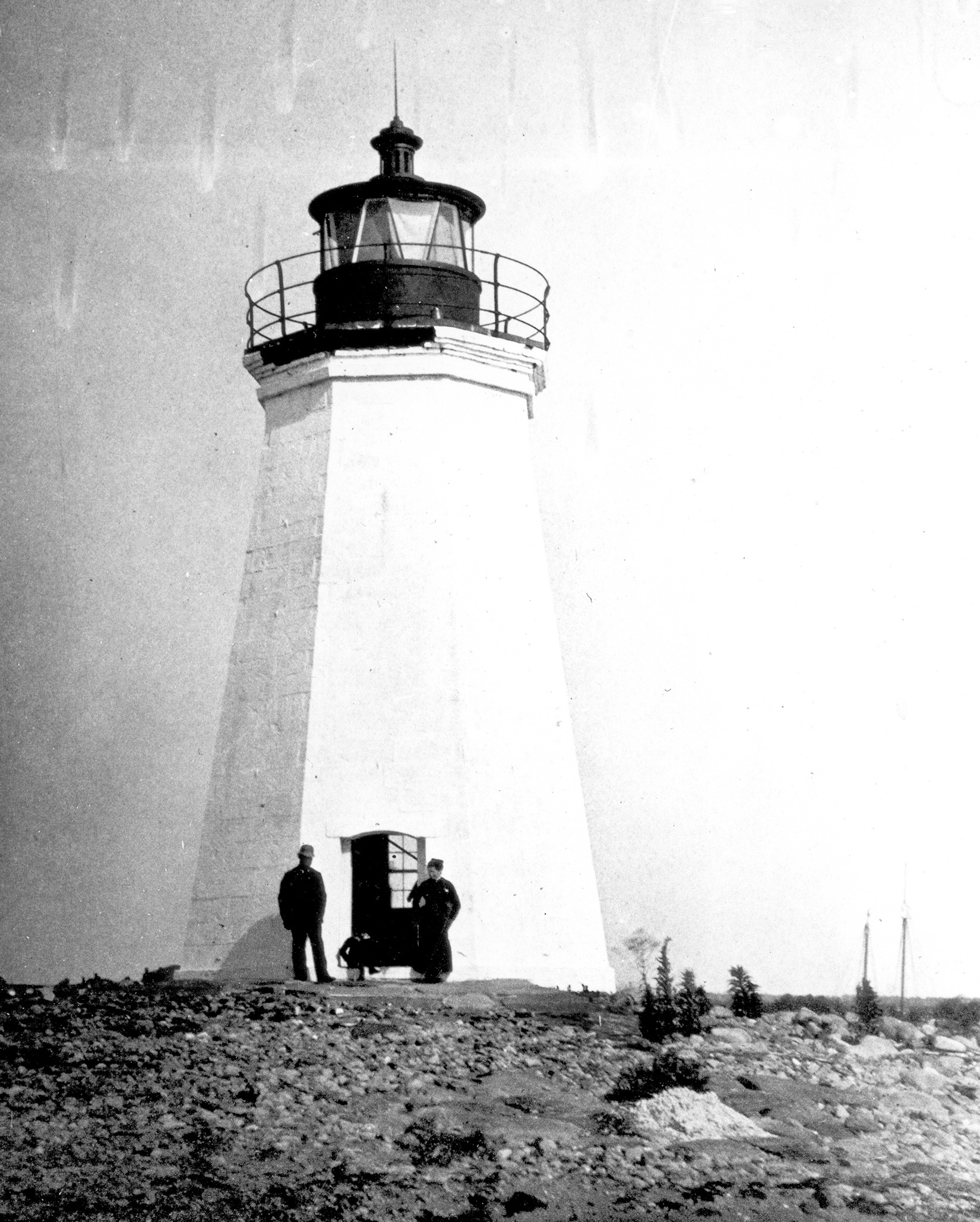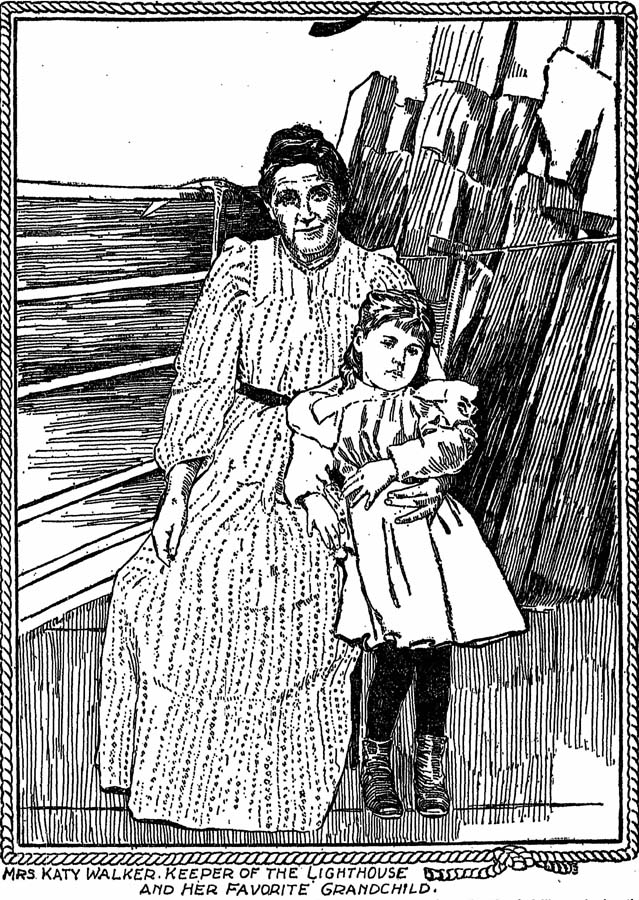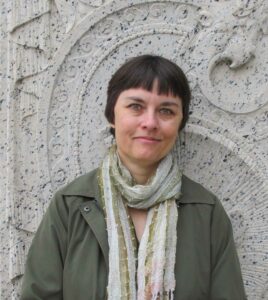Kate Walker here, keeping the light on Robbins Reef on the edge of New York Harbor.
Every morsel of food we ate had to be brought by boat from Staten Island. The perfect lighthouse would have a vegetable garden, some fruit trees, a flock of chickens, a cow to supply milk, maybe even a horse to get around on. These would provide much of the food a keeper’s family ate, but would also add many tasks to the keeper family’s daily life: planting, tending, and harvesting the vegetables and fruit; collecting eggs every day; milking the cow every morning and in the evening; feeding the animals.
Fannie Salter had the perfect lighthouse at Turkey Point at the head of Chesapeake Bay. In December 1861 the District Engineer built “250 yards of new fencing at Turkey Point light station” to keep cattle from invading the lighthouse garden. This protected about four acres of ground.

How big was Fannie Salter’s four acres? As big as a football field? Or a soccer field? Or a baseball field? Or an average city block?

Black Rock Harbor Light Station on the north shore of Long Island Sound was on Fayerweather Island, shrunk by erosion to three scraggly acres of tall grasses and ailanthus trees, planted by Kathleen A. Moore. Kate assisted her invalid father in keeping the light. She said, “I never had time to get lonely. I had a lot of poultry and two cows to care for, and each year raised 20 sheep, doing the shearing myself—and the killing when necessary. You see, in the winter you couldn’t get to land on account of the ice being too thin, or the water too rough. Then in the summer I had my garden to make and keep. I raised all my own stuff, and as we had to depend on rain for water, quite a bit of time was consumed looking after that. We tried a number of times to dig for water, but always struck salt.”
Kate carved duck decoys, selling them to visitors as souvenirs or to sportsmen who hunted. She also planted, gathered, and seeded oyster beds in Long Island Sound. She tended the Black Rock Harbor Light until she was 83 years old, then bought a retirement home with her savings and lived to age 105.
Was hers a perfect lighthouse?
 Information from National Archives Record Group 26 Entry 3 (NC-63), Volume 354; and from the New York Sunday World in 1889 and the Bridgeport Standard, March 28, 1878.
Information from National Archives Record Group 26 Entry 3 (NC-63), Volume 354; and from the New York Sunday World in 1889 and the Bridgeport Standard, March 28, 1878.
Submitted May 29, 2018
* * * * * *
U.S. Lighthouse Society News is produced by the U.S. Lighthouse Society to support lighthouse preservation, history, education and research. You can receive these posts via email if you click on the “SUBSCRIBE” button in the right-hand column. Please support this electronic newsletter by joining the U.S. Lighthouse Society if you are not already a member.
If you have items of interest to the lighthouse community and its supporters, please email them to candace@uslhs.org.

Candace was the US Lighthouse Society historian from 2016 until she passed away in August 2018. For 30 years, her work involved lighthouse history. She worked with the National Park Service and the Council of American Maritime Museums. She was a noted author and was considered the most knowledgable person on lighthouse information at the National Archives. Books by Candace Clifford include: Women who Kept the Lights: a History of Thirty-eight Female Lighthouse Keepers , Mind the Light Katie, and Maine Lighthouses, Documentation of their Past.

